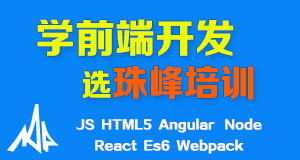Gulp系列教程:图片和矢量字体
这是Gulp系列教程的第六部分。上篇文章长而复杂。这次的文章比较简单:我会展示如何移动图片以及生成矢量字体。
Images
image任务很简单。现在它的功能仅仅是把图片复制到资源目录。我会在稍后产品构建的过程中优化图片。
// gulp/config.js
images: {
src: srcAssets + '/images/**/*',
dest: developmentAssets + '/images'
}
// gulp/tasks/development/images.js
var gulp = require('gulp');
var changed = require('gulp-changed');
var config = require('../../config').images;
/**
* Copy images to build folder
* if not changed
*/
gulp.task('images', function() {
return gulp.src(config.src)
.pipe(changed(config.dest)) // Ignore unchanged files
.pipe(gulp.dest(config.dest));
});
矢量字体
我在网页中使用矢量字体。矢量字体是在网页中使用高质量图片的一个选项。另一个选项是直接用SVG或高分辨率图片。
我使用Font Custom来生成矢量字体。它也有gulp插件,但我运行不了。我觉得在命令行里运行任务(通过Gulp.js)完全可以接受。随后我会用Gulp.js监听含有SVG文件的目录并在需要时重建矢量字体。
首先需要安装Font custom(通过Homebrew,我可以在Font Custom网页上找到更多安装方法):
$ brew install fontforge --with-python
$ brew install eot-utils
下一步在主目录中运行命令bundle exec fontcustom config,这条命令会创建一个fontcustom.yml文件。修改文件如下:
# --------------------------------------------------------- #
# Project Info
# Default values shown. Learn more about these options by running
# `fontcustom help` or visiting <http://fontcustom.com>.
# --------------------------------------------------------- #
font_name: fontcustom
css_selector: .icon-
css_prefix: icon-
preprocessor_path: "/assets/fonts"
autowidth: false
no_hash: false
force: false
debug: false
quiet: false
# -------------------------------------------------- #
# Project Paths
# Relative paths are expanded from PROJECT_ROOT (defaults to the directory
# where the fontcustom command is run). INPUT and OUTPUT can be strings or
# hashes or file types / names.
# ------------------------------------------------- #
#project_root: some/other/place
#manifest: tmp/fontcustom
input:
vectors: vectors # required
# templates: app/assets/fonts/fontcustom/templates
output:
fonts: app/_assets/fonts # required
css: app/_assets/scss
preview: docs
# my-custom-template.yml: config
# ---------------------------------------------- #
# Templates
# Included in Font Custom:
# preview, css, scss, scss-rails, bootstrap, bootstrap-scss, bootstrap-ie7,
# bootstrap-ie7-scss
# Custom templates should be saved in the INPUT[:templates] directory and
# referenced by their base file name.
# --------------------------------------------- #
templates: [ scss, preview ]
下一步添加配置文件以及任务用来把字体复制到目标路径:
// gulp/config.js
copyfonts: {
development: {
src: srcAssets + '/fonts/*',
dest: developmentAssets + '/fonts'
}
}
// gulp/tasks/development/copy-fonts.js
var gulp = require('gulp');
var config = require('../../config').copyfonts.development;
/**
* Copy fonts to folder
*/
gulp.task('copy:fonts', ['fontcustom'], function() {
return gulp.src(config.src)
.pipe(gulp.dest(config.dest));
});
如你所见,在把字体复制到资源目录前还运行了另一个任务:fontcustom。
Font Custom检查文件的修改并且如果文件内容一致不会生成任何内容。
我使用gulp-shell插件来执行shell命令:
$ npm install --save-dev gulp-shell@0.5.0
// gulp/tasks/development/fontcustom.js
var gulp = require('gulp');
var shell = require('gulp-shell');
/**
* Generate fonts with Fontcustom
* `brew install fontforge --with-python`
* `brew install eot-utils`
*/
gulp.task('fontcustom', shell.task([
'bundle exec fontcustom compile'
]));
Fontcustom是一个Ruby Gem包因此你需要全局安装Gem或在Gemfile中配置(如果全局安装需要在命令行中运行bundle exec)。我选择在Gemfile中安装。
source "https://rubygems.org"
gem 'jekyll', '~> 2.5.2'
gem 'sass', '>= 3.3'
gem 'fontcustom', '~> 1.3.7'
添加fontcustom配置后需要再次运行bundle install。
源代码
总结
这是Gulp系列教程的第六部分的总结。我们学习了如何用Gulp.js移动文件(甚至不需要额外插件),以及如何创建矢量字体。这没有什么特别的,但是下一部分我们会再次讨论一些有趣的事情。
本文根据@Stefan Imhoff的《Introduction to Gulp.js 6: Images and Vector Fonts》所译,整个译文带有我们自己的理解与思想,如果译得不好或有不对之处还请同行朋友指点。如需转载此译文,需注明英文出处:http://stefanimhoff.de/2014/gulp-tutorial-6-images-vector-fonts/。
如需转载,烦请注明出处:http://www.w3cplus.com/workflow/gulp-tutorial-6-images-vector-fonts.html







